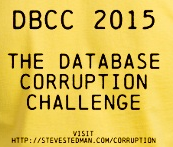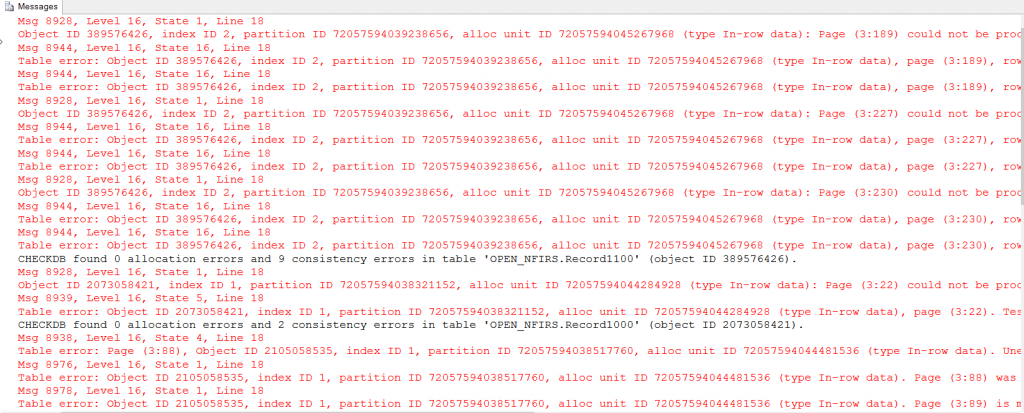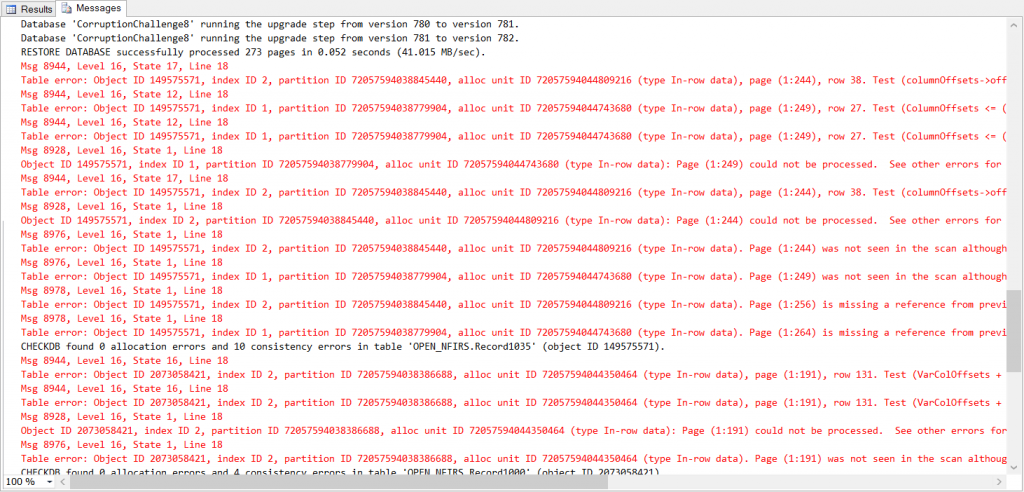Database Corruption Challenge #10
Welcome to Week 10 of the Database Corruption Challenge. I have created a more corrupt, and perhaps more diabolical corruption scenario than previous weeks. This is the last week of 10 in the Database Corruption Challenge.
Here is how it works; I have created a corrupt database, then solved the corruption myself in order to prove that it is possible to fix, without data loss.
Database Corruption Challenge Details
There will be a total of 6 points available in this weeks challenge.
- 1 point for being the first to solve the corruption challenge, and posting something about the corruption challenge on Twitter or LinkedIn. Please reference http://SteveStedman.com/Corruption in the post.
- 1 point for having the solution right the first time you submit your solution.
- 3 points for solving all the corruption with no data loss and providing the TSQL code (or other detailed steps) that was used to fix the corruption.
- 1 point for completing the Blog Interview Questions. This does not have to be submitted with your solution, but it does need to be submitted by the end of the competition.


